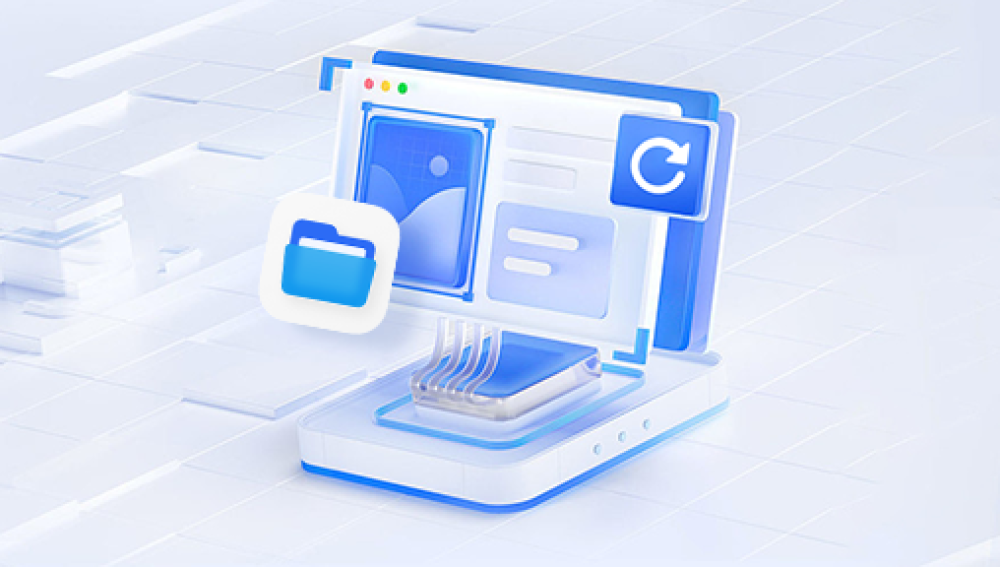Whether you're managing financial data, inventory, sales projections, or complex calculations, Microsoft Excel is a powerhouse for organizing and analyzing information. But what happens when your spreadsheet hours or even days of work is accidentally deleted? It’s a sinking feeling many people know all too well.
Different Types of File Deletion
Accidental deletion: You deleted the file and emptied the Recycle Bin.
Unsaved file: You closed Excel without saving.
File overwritten: You saved a different version over the original.
Corrupted file: The spreadsheet is present but won’t open.
Formatted drive or crash: Files were lost due to formatting or hardware/software failure.
Identifying the issue will help you select the best recovery method.

Method 1: Undo a Deletion in File Explorer
If you just deleted the file:
Right-click anywhere inside the folder.
Choose Undo Delete.
Or simply press Ctrl + Z in the folder to undo the last action.
This only works immediately after deletion.
Method 2: Restore from Recycle Bin (Windows)
If the spreadsheet was deleted from your desktop or folders, it likely went to the Recycle Bin.
Steps:
Open the Recycle Bin from the desktop.
Find your Excel file (.xls or .xlsx).
Right-click and choose Restore.
The file will be restored to its original location.
If the file isn’t there, it might have been permanently deleted or the bin was emptied.
Method 3: Check OneDrive/Google Drive Recycle Bin
If you save your files to a cloud storage service like OneDrive, Dropbox, or Google Drive, you may be able to restore them.
OneDrive:
Go to onedrive.com.
Log in and go to the Recycle Bin.
Select your deleted Excel spreadsheet.
Click Restore.
Google Drive:
Visit drive.google.com.
Check the Trash section.
Right-click the file and choose Restore.
Cloud backups are one of the safest ways to protect against accidental deletions.
Method 4: Recover Unsaved Excel Files
If Excel or your system crashed before you could save the file, Microsoft has an AutoRecover feature that may help.
Steps:
Open Excel.
Go to File > Open.
Click Recover Unsaved Workbooks at the bottom.
A list of recent unsaved files will appear.
Select the desired file and click Open, then save it.
Default AutoRecover location:
mathematica
CopyEdit
C:\Users\[YourName]\AppData\Local\Microsoft\Office\UnsavedFiles\
Note: AutoRecover files are temporary. Save them as soon as you find them.
Method 5: Recover from File History (Windows)
Windows offers File History, a backup feature that allows you to restore previous versions of your files.
Steps:
Navigate to the folder where the Excel file was saved.
Right-click the folder and select Restore previous versions.
A list of previous versions will appear.
Open and find the version containing your Excel file.
Click Restore.
File History must be enabled beforehand for this to work.
Method 6: Use Excel’s Version History (Microsoft 365)
If you use Microsoft 365 or OneDrive, Excel saves previous versions of your files.
Steps:
Open the file in Excel (from OneDrive).
Click File > Info > Version History.
Browse through the saved versions.
Open and restore the version that contains your lost data.
You can also access version history directly from onedrive.com by right-clicking on the file and selecting Version history.
Method 7: Recover Excel Files from Temporary Files
When you open or create a new Excel file, the system creates temporary files (.tmp) that sometimes remain even after a crash.
To find them:
Open File Explorer.
Go to:
mathematica
CopyEdit
C:\Users\[YourName]\AppData\Local\Temp\
Search for files beginning with ~ or ending with .tmp.
Look for files named like ~Excel*.tmp.
Rename the file extension from .tmp to .xlsx.
Try opening it in Excel.
Temp files may contain full or partial content of your spreadsheet.
Method 8: Restore Files from Backup Software
If you use any third-party backup solutions (like Acronis, Macrium Reflect, or Windows Backup), now’s the time to use it.
Steps:
Open your backup software.
Choose the backup set containing your Excel spreadsheet.
Browse or search for the file name.
Restore it to its original or alternate location.
These solutions often allow version-based recovery as well.
Method 9: Use Professional Data Recovery Software
Losing a critical Excel spreadsheet can be frustrating, especially when it contains valuable data for work, school, or personal projects. Fortunately, Drecov Data Recovery provides a powerful and user-friendly solution to help you retrieve deleted Excel files quickly and safely.
Whether the spreadsheet was accidentally deleted, lost after a system crash, or disappeared following a formatting error, Drecov Data Recovery can help. Its advanced scanning algorithms can search deep into your drive, locating lost .xls and .xlsx files even after they’ve been removed from the Recycle Bin. The software supports all major storage devices, including internal hard drives, USB flash drives, SD cards, and external hard disks.
To recover a deleted Excel file using Drecov Data Recovery, simply launch the software, select the drive or folder where the file was located, and initiate a scan. Once the scan is complete, browse the list of recoverable files, preview the Excel spreadsheet, and restore it with a single click.
Method 10: Recover from Email Attachments or Shared Locations
Sometimes, your Excel spreadsheet may have been sent as an attachment or uploaded online.
Check:
Email sent folder: You may have emailed the file.
Microsoft Teams or Slack file history.
File-sharing services (WeTransfer, Dropbox).
Shared drives or work network folders.
Any copy even an older one can save time rebuilding your lost spreadsheet.
Method 11: Restore a File Using Command Prompt (Advanced)
You can use the Command Prompt to recover deleted files on some drives if the data hasn’t been overwritten.
WARNING: This is for advanced users only.
Open Command Prompt as administrator.
Type:
bash
CopyEdit
chkdsk X: /f
(Replace X: with your drive letter.)
3. Then type:
bash
CopyEdit
attrib -h -r -s /s /d X:*.*
Check your drive after the command completes. It may expose previously hidden or deleted files.
What If the File Was Overwritten?
If you saved another Excel file with the same name and location, the old file is likely overwritten. But sometimes, shadow copies or AutoRecover backups still exist.
Try:
File History (if enabled).
OneDrive version history.
Recovery software (some can scan overwritten sectors).
Overwritten files are harder to recover, and results vary depending on system use.
How to Avoid Losing Excel Files in the Future
1. Enable AutoSave in Excel (Microsoft 365)
This saves your changes to OneDrive in real-time.
2. Use Save As frequently
Save different versions of your file manually:
report_v1.xlsx
report_v2.xlsx
3. Backup regularly
Use OneDrive, Google Drive, or backup software.
4. Turn on File History (Windows)
This ensures system-level file versioning.
5. Avoid using same file across multiple devices
Conflicts or overwrites can cause data loss.
6. Keep your system stable
Use antivirus software and update Excel regularly.
When to Seek Professional Help
You should consider a professional data recovery service when:
The drive was formatted or corrupted.
Recovery software failed.
The data is critical (business, legal, financial).
They can use advanced tools to recover data at a physical level. However, it can be expensive—starting from $100 and going into thousands depending on complexity.
Frequently Asked Questions
Can Excel recover deleted rows or columns?
If you deleted them in your current session, use Ctrl + Z or the Undo button. If the file was saved afterward, recovery requires version history or backups.
How long does AutoRecover keep files?
Unsaved files are typically stored for 4 days unless saved manually.




